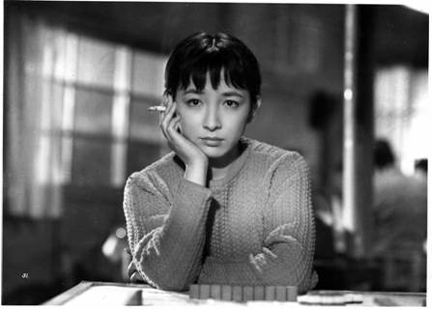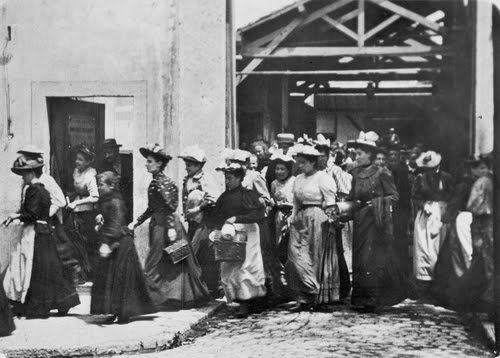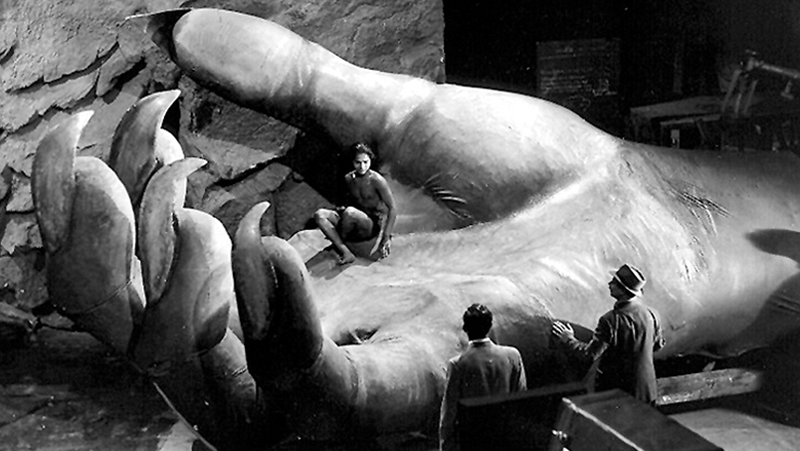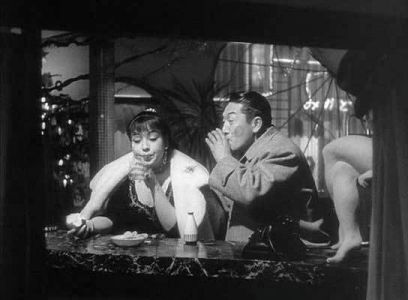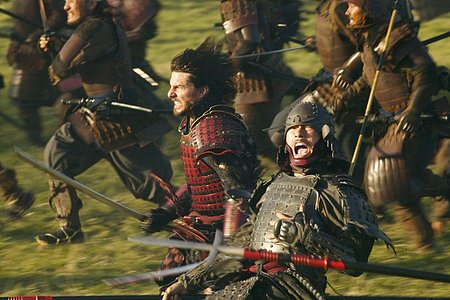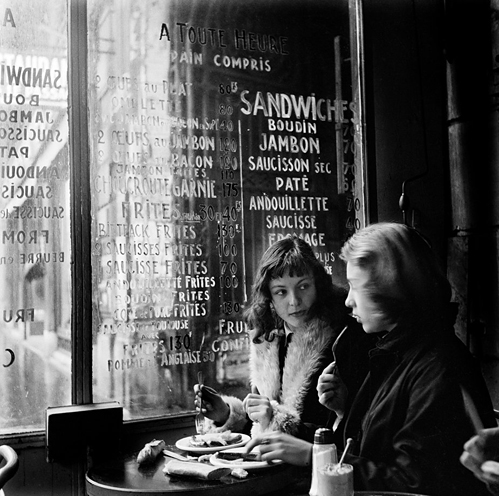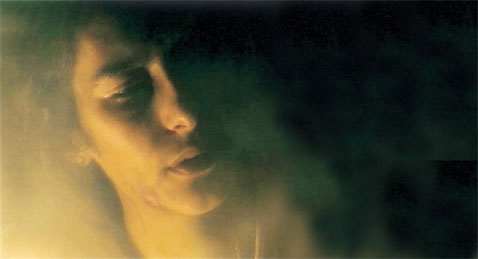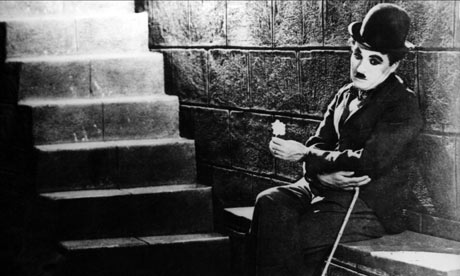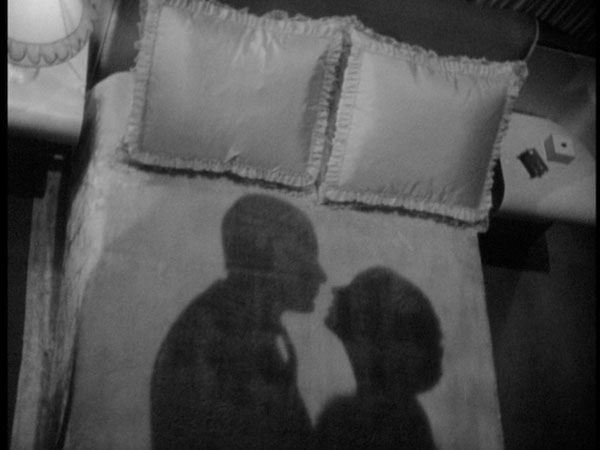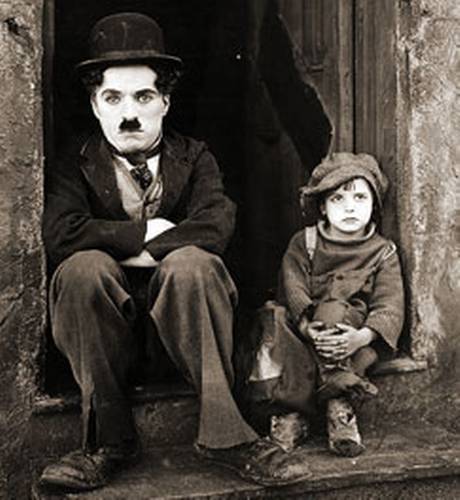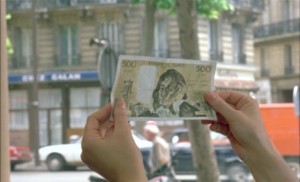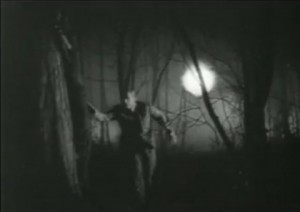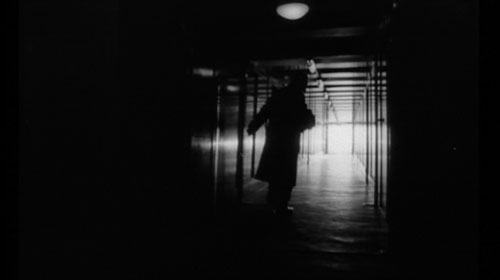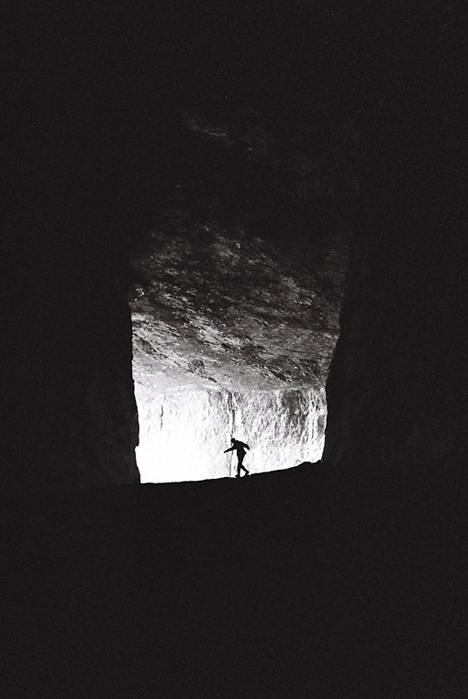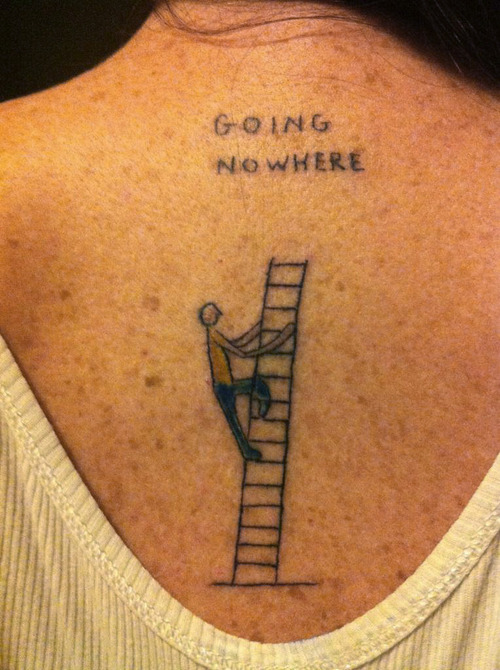
Pedro Costa: A Closed Door That Leaves Us Guessing
From 12-14 March 2004, Pedro Costa offered an intensive course in filmmaking at the Tokyo Film School under the joint auspices of Athénée Français Cultural Center and Cinematrix.
First, I wanted to thank a few people – this is going to be a bit like the Oscars, but that’s how it is. I wanted just to say thanks to my mother, to Mr Yano and to Mr Matsumoto, because they are the two most important people for me, at least for some time now. (1) They’ve given me a good reason for something that I’ve felt – that perhaps I’ve loved Japan and didn’t know it. Just as in the cinema, we must meet people, real people, in flesh and blood, to believe in this love. Of course, I thank all the others in the very lovely brochure that you have published, and which gives me great pleasure and honour. All of this is to say that I thank those who I know now and didn’t know before, and that has something to do with what I’d like to say to you today, tomorrow, and the day after—simply, that we can know things through the cinema. Like me, for example, I loved Japan and I knew some things about Japan, without ever having been here before now.
I knew the Japan of films, above all of the three directors most well known in Europe – namely, Mizoguchi, Ozu and Naruse. I knew Japan through them, these who are dead, who are of another time, but I loved it already, at a distance – and that also is very important in the cinema, to love at a distance. There were things in Japan that I’d never seen in the films of Ozu or Mizoguchi or Naruse, and that I continue not to see in Japan. Here, I launch into a rather complicated subject, for there are things that these directors, or the other great directors I don’t know, hid from me, aspects of Japan that they didn’t show me. Today I’m in Japan and I still don’t see them. That is to say, sometimes in the cinema, it’s just as important not to see, to hide, as it is to show. The cinema is perhaps more a question of concentrating our gaze, our vision of things. That’s what great directors, like these three Japanese, are doing. They are not showing Japan – they’re condensing something. Instead of scattering your mind, your heart and your senses, they’re concentrating your vision. That’s what I’m always saying: the cinema is made for concentrating our vision. To concentrate means also to hide. It’s a cliché to say that Japan is like the films of Ozu, and the history of Japan is the same as in the historical films of Mizoguchi. Now I understand and I sense Japan better (it’s the same thing: to understand is to feel and to feel is to understand). For example (and you must not laugh now), I have the impression that I don’t see pregnant women on the streets in Japan, and I understand that after having seen the films of Ozu. I know what it means not to see a pregnant woman on the streets of Tokyo. In Ozu’s films, he gives us cues to understand that it’s hidden. That is to say, Ozu prepared me to see this absence of pregnant women. So, sometimes a director who is very much a realist, working almost in a documentary mode like Ozu, sometimes he makes films also to hide something. There’s a secret somewhere in his films, and to assert certain things he must hide others. Maybe it’s necessary to step a bit outside of Japan, because what I’m about to say could make you uncomfortable, I don’t know … but for me, the true Japanese documentaries are by Ozu. All the people I know in Japan, all my Japanese friends, I knew before, through the films of Ozu. What I’ve just said, Ozu has written in his journal. He says: ‘I’ve never made up a character. In my films, I make copies of my friends.’
All of that is to begin to tell you what I think the cinema really does well, what it has as its ultimate function, and in the first place that isn’t artistic or aesthetic. For me, the primary function of cinema is to make us feel that something isn’t right. There is no difference between documentary and fiction here. The cinema, the first time it was seen and filmed, was for showing something that wasn’t right. The first film showed a factory, the people who were leaving the factory. It’s similar to photography, which is also something quite close to our world. It’s like when we take a photo in order to have proof of something that we see, which is not in our mind, something in front of us, of reality. The first photograph shown to the world in newspapers was of the corpses of the Paris Commune, it showed the bodies of the Communards. (2) So, you begin to see that in the first film ever shown we see people leaving a prison, and the first photo published in a newspaper showed dead people who tried to change the world. When we speak of cinema starting from there – or of photography, documentary, or fiction – we’re speaking of its very realist basis. It’s sort of a basic historical given that the first film and the first photograph are somewhat terrible things. They’re not love stories, they’re anxieties. Somebody took a machine in order to reflect, to think and to question. For me, there is in this gesture, this desire – be it the gesture to make a film or a photograph, or today to make a video – there is in this gesture something very strong, something which says to you: ‘Don’t forget.’ Of course, the first gesture, the first film, the first photograph, the first love, is always the strongest, always the one that we don’t forget.
The problem comes afterwards, because after the first film, after Workers Leaving the Lumière Factory (1895, La Sortie des Usines Lumière) by the Lumières, there is a second film, again workers leaving a factory made by the same Brothers Lumière. It is here that things deteriorate, go awry, become complicated, because the Lumières were not very happy with the appearance of the workers coming out of their factory (it was their own factory), they said to the workers: ‘Try to be a bit more natural.’ They managed the workers. So the first gesture was lost, this first act of love – it’s an act of love but also of criticism – is very powerful, like a first gaze is very powerful. So they managed the workers, they said: ‘You, go left, don’t go to the right … you, you can smile a bit, and you too … you, go with your wife over there …’ And so there was mise en scène. Thus, fiction was born, because the boss gave orders to an employee, to a worker. It’s obvious that the first film script – a script is always a book of law, of rules – the first book of rules for cinema was a production script. In comedy scripts, it was noted how much it costs for an actress to play a young girl, how much it costs for an actor to play a lover, and for an actor to play the father who just hit the head of his son, i.e. that costs such and such amount of money. That was it, the first script.
At the same time, or a bit afterwards, films were also made without scripts, and strangely these films still exist today in the museums of cinema. I’m talking about erotic films. It’s as if the first fiction films (as we understand a fiction film) with a script, a love story, and characters which speak, were romantic comedies. We could also say that the first films without a script, thus documentary, are vaguely amateur films, vaguely secret, pornographic. At the beginning of the century, in 1900, there were thus on the one hand, the first directors who wrote fiction and the script was how much things cost, so it was really an economic story, this love story, a romantic comedy, a melodrama. While on the other hand, there were directors who filmed without a script, who also filmed love stories, that is to say, the gestures of love, in an erotic or pornographic film, but without a script. So, there were already people who showed things, fiction, they showed a love story, a girl, a father, a mother, a happy ending, and on the other hand, there were people who also showed things, a gesture of love, somebody fucking somebody else. What’s interesting here is that documentary and fiction in the cinema are born at the same time, with the same idea of love. Except that on one side, it started with a sort of economy, which afterwards began to be an industry, and from the industry, a market, and thus a need for people who want to buy a certain product. It became the law of the market. Even if that’s just one aspect of cinema at the beginning of Hollywood, it continues even today. On the other side, there were films without a script, without an apparent market, without an industry, amateur films that were made at home, and which were above all also films of love, because they were erotic films, family films, but they continued to be only the gesture to make a film for film’s sake. It was thus necessary to have people who could bridge these two things. At the beginning of the century, there were people who succeeded in putting a bit of fiction into documentary and a bit of documentary into fiction, and thus a bit of money into the private sphere, and a bit of the private sphere into money. We could say that the first directors were those who synthesised the documentary and fiction film, that is to say, created a synthesis of the almost private, documentary film, made in its own corner, in a village, at home, and the film made in public where one showed everything. This synthesis between the public and the private happened with Griffith who made a war film that was also a pornographic film, and succeeded in putting sex and terror into the same shot. This happens in The Birth of a Nation (1915) and Intolerance (1916). These films convey a very strong feeling that the passions and terrors of men can make two things: love and war.
Griffith saw that the cinema could show things that everybody knows, that everybody wants to recognize, and at the same time, not show certain things which are very violent, which must be hidden. Griffith was the first to understand and experiment with the idea that cinema is an art which can make its strongest effect with the idea of absence, with the idea of cinema as an art of absence. To give a very simple example: you’ve seen a film that I made called Bones (1997), and what is not in Bones are, among many other things, drugs. There’s another absence in the film, and that’s you, but Ossos ends exactly like Mizoguchi’s film Street of Shame (1956), that is to say, there’s a girl who closes a door and who looks at you, and the door is closed on you. That means that you can’t enter this film. Starting from this moment, you yourself cannot enter. Or, in another way, it’s better that you don’t enter this film, into this world. Mizoguchi did this with respect to Japan, with regard to the business of prostitution (which is universal, not specifically Japanese), but he went very far into the meaning of extreme misery, such as one man can inflict on another, or a man can inflict upon a woman, or finally that we can inflict upon ourselves. I think what Mizoguchi wanted to say in the final shot was: ‘Starting from here, it’s going to be so unbearable that there’s not even a film.’ After this closed door, a film is no longer possible. It’s terrible, so don’t come in. It’s a closed door for you. So, Ossos ends with a closed door. I didn’t know it when I filmed that shot that I was thinking of a girl who shuts a door. It was an ending, but I’d not thought of Mizoguchi. I’d seen all of Mizoguchi’s films, but at that moment I didn’t know it. After that the film came to me – something that Mizoguchi could not do, I believe.
Afterwards, I didn’t know if Bones had become a documentary or if it was still fiction, but I know there’s a closed door that leaves us guessing. As you have seen, Ossos is a film that came from very familiar things, things you easily recognize. It comes from Chaplin, from the melodramas of the beginning of cinema, a boy with a baby who has nothing to eat, the street, speeding cars, bread, a prostitute, a kitchen, all of that is the beginning of cinema. Even if there’s a very strong desire be a documentary, because it’s made with people who are not actors, who are very close to the things that they represent. The boy is really poor, the housekeeper, she’s a housekeeper, the neighbourhood, it’s a real neighbourhood. We’re not in a studio, but even if there’s a desire to be something of a documentary, it’s nevertheless fiction that carries, that saves the film. Fiction is always a door that we want to open or not – it’s not a script. We’ve got to learn that a door is for coming and going.
I believe that today, in the cinema, when we open a door, it’s always quite false, because it says to the spectator: ‘Enter this film and you’re going to be fine, you’re going to have a good time’, and finally what you see in this genre of film is nothing other than yourself, a projection of yourself. You don’t see the film, you see yourself. Fiction in the cinema is exactly that: when you see yourself on the screen. You don’t see anything else, you don’t see the film on the screen, you don’t see a work, you don’t see the people who make things, you see yourself, and all of Hollywood is based on this. It’s very rare today that a spectator sees a good film, he always sees himself, sees what he wants to see. When he begins, rarely, to see a film, it’s when the film doesn’t let him enter, when there’s a door that says to him: ‘Don’t come in.’ That’s when he can enter. The spectator can see a film if something on the screen resists him. If he can recognise everything, he’s going to project himself on the screen, he’s not going to see things. If he sees a love story, he’s going to see his love story. I’m not the only one to say that it’s very difficult to see a film, but when I say ‘see’ it’s really seeing. It’s not a joke, because you think that you see films, but you don’t see films, you see yourself. It’s very strange but I assure you, this is what happens. To see a film, that means not crying with the character who cries. If we don’t understand that, then we don’t understand anything. This is why I spoke of doors which close themselves. There are certain films, for me, which are like doors, even if there are no doors in them. They resemble doors that don’t let you enter as the protagonist of the film. You are outside. You see a film, you are something else, and there are two distinct entities. There are certain films, for me, which make this separation, for example the films of Ozu, Mizoguchi or Naruse, or many others, but here I will cite the Japanese. This door is absolutely necessary. It’s not a piece of private property, that is to say, it’s not closed in an authoritarian manner. We can open it, we can close it, it’s your choice. It’s always your choice in the cinema, it’s always the choice of the spectator. If you decide to go see The Last Samurai (2003), you’re going to see The Last Samurai, you know that it’s going to be painful, you’re Japanese, but you go and see it, I’m sure that you go and see it. It’s like junk food, like cake, it makes you want it, and you go for it, and you know it’s bad for you, but you go for it. This is what I call the open door films. Commerce is like that. The door to McDonalds is always open. So, a film like Late Spring (1949) or An Autumn Afternoon (1962) is not completely open. In a similar way, Ossos is a film that slightly closes the door. It hides certain things, it tells you that you can feel pain, but not everything, and so that suggests a bit of trouble.
I don’t know if you’ve heard it, but there’s a word of praise, a compliment from Mizoguchi to Ozu that’s very beautiful, and that relates to this. One day, a journalist asked Mizoguchi if he liked his colleague Ozu’s films, and he replied: ‘Of course.’ ‘Why?’ ‘Because I think that what he does is much more difficult and mysterious than what I do.’ (3) That’s an enormous compliment because you know better than I that Mizoguchi is considered a poetic and mysterious director, and Ozu a very down to earth, very realistic director. It’s Mizoguchi who says: what that gentleman does with these doors is more difficult than what I’m doing. There are the doors, once again! It’s beautiful because Mizoguchi is the director of mysteries, of secrets, while Ozu is the director of doors, or windows, of entries and exits, of marriage, of very basic things. It’s as if Mizoguchi said: I who spin mystery with all of this fog, I’m nothing next to a fellow who films doors and back streets. That, that’s much more difficult and mysterious. That’s a statement of genius. That, to me, is the greatest compliment that one director can make to another, and the most beautiful definition of documentary, of fiction, realism, and the imagination.
I’ll summarise this. It’s very simple: I think, and I hope that you’ll agree with me, that Mizoguchi, Ozu, Griffith and Chaplin are the greatest documentary directors, and thus the greatest directors of life, of reality. They are the directors who hide things, who close the doors, and you can open them, sometimes. Yet, to open the doors of such films is difficult, dangerous – it’s work. Sometimes when we think that we’re going to show everything, that we make a documentary to show everything, in fact we don’t show anything, we don’t see anything, we’re just scattered. It’s absolutely necessary that you must be outside, not on the screen. Never cry or suffer with the character who suffers on the screen, never. When we do that, it’s exactly what we do when we go to McDonalds, and you know that very well, for everybody here has already been unfaithful to his fiancée, has already betrayed somebody, has already had an emotional problem. At that moment, he knows that he’s been stupid, cowardly, and just not good. As for me, I cry and am always more affected and deeply moved by the love of a couple in the fifteenth or sixteenth century of Japan – a completely abstract thing for me – I’m more affected by that than by a terrorist attack reported on television, like the one yesterday in Madrid. (4) Sometimes, a single word can kill. I don’t know if it can save, but a single word can do some good when it is well spoken, well-crafted, well-thought, and delivered at just the right moment. That is to say, this word is in the films of Mizoguchi, Ozu, John Ford, it’s not in TV documentaries, or in news reports. A single gesture or glance of an actor can say a lot more about suffering, misery, or joy, than a documentary that shows everything.
So, the real directors don’t distinguish between documentary and fiction. Never in my life have I thought: am I making a documentary, am I making a fiction, and what are the ways to make one or the other? They don’t exist. We film life, and the more I close the doors, the more I hinder the spectator from taking pleasure in seeing himself on the screen – because I don’t want that – the more I close the doors, the more I’m going to have the spectator against me, perhaps against the film, but at least he will be, I hope, uncomfortable and at war. That is, he will be in the uneasy situation of the world. It’s not good if one is at ease all the time. So, for me, films, the entire history of cinema, and I would even say all music, all the work that men have made in what we call the arts – this work is like the trains that go alongside life, but must never cross it.
It’s work to make films, a kind of work very comparable to the work of seeing films. It’s as difficult to see a film as it is to make one properly. For example, it’s very difficult to see an Ozu film, to really see one from the perspective that they are truly documentaries about mankind, about the passions. There is a small detail, which is Japanese, a small area on the earth, but it’s just a detail, say, it’s a yellow bottle, not a green one, which is a Japanese detail. What’s important here is that it’s a documentary about what men do to other men. For me, it’s a detail that Ozu happens to be Japanese. Personally, I think he’s Portuguese … but when we make what we call a documentary, we are very quickly immersed in nationalist thought. If you go to a documentary film festival, for example at Yamagata, you see there are films from Chile, from Argentina, and already we’re going to see a Chilean film. It’s not that the problem of the mine or the workers in Chile couldn’t be important, specific, and particular to Chile, it’s that normally they are poorly filmed, poorly seen, seen in any old way, seen without everything provided by a craftsman, an artist, or a director, such as patience, or the qualities of the profession.
The pleasure of making a film is in making a film, it’s not in showing a problem. The first reason to make a film is for the pleasure of making it, the pleasure of the work. If there’s no pleasure in the work, there’s nothing. So, what would be the most important characteristic of a documentary? It’s seeing that the person who made it did a good job, that’s the first thing, that he went up to something and worked on it. A film is always a documentary of its own filming, of its own making. Here, I’ll say that every film by Ozu and Mizoguchi is a film above all concerning artisans, concerning the pleasure of working, the work, that work is a good thing, and work well done is beautiful, it says everything, and that’s good enough for a film. The work that we see well done – that’s more important than the theme. For example, in the pleasure and work that I shared with others in making Ossos, my task was, first, to create an interesting and well-made film; and, second, to make it with people who didn’t know anything about cinema. This desire made a film that is, I hope, morally and cinematically interesting. This is not because it speaks of misery or suffering, but because it is constructed in a manner I believe to be very fair, correct.
So, to finish this story about documentary and fiction – for you are students of cinema, or at least interested in yourselves – we must never wonder if the work we’re doing is documentary or fiction, that has no interest as a problem. It has a theoretical interest, but it’s not a question that we’re going to ask ourselves, and afterwards the critics are going to say, ‘that’s fiction’, but such a question doesn’t exist for me, that shouldn’t exist. That’s not the question, but I found it a very complicated way to begin this discussion today. After Ossos, I made a film called In Vanda’s Room (2000) and, for example, all the journalists, Japanese, American, British, they always asked me: ‘Ah, do you see this film more as fiction or as documentary?’ and sometimes I say that this question is actually about something else. It hides another question, which is: ‘Is this true, or is this false?’
I don’t know if this is comprehensible, but imagine that you are acquainted with Johann Sebastian Bach, and you have a romantic problem. Bach, he’s indifferent to your problem, he just doesn’t give a damn. He doesn’t care at all about your girlfriend, your problems, or your trivial emotional situation. He absolutely doesn’t care about private matters. Here, I believe that we could say that Bach is like a documentary director, he’s someone who doesn’t want to add any feelings in his work, who doesn’t want to put any of you into his work. I believe the cinema has a very strong power of projection, and in two directions. There’s something that comes and goes, something that leaves the screen, towards you, and also something that goes from you towards the screen.
It is a question of fear, that’s scary, but that’s the difference between the great films, the great directors, and the mediocre ones. Mediocre directors take advantage of the fear on the screen. It’s a game of shadows, of projection, and so there’s fear. When the lights are turned out, we’re going to be afraid. The bad director, fiction or documentary, is going to play with our fear in a bad way. So, fear, desire, and projection – as you know, these three words are often used in psychology, in psychoanalysis. Personally, I believe that a film should not be made into a psychoanalytic session, it should not psychologise. The more cinema descends into psychology, the more people are confused.
Do you know the films of Chaplin when he was the Tramp? There are not many. I’d thought of showing a bit of Chaplin, because he’s the first who played with everything that I’ve described here: documentary, fiction, fear, desire. Chaplin is above all, I believe, the only director who has succeeded, as we would say that Picasso succeeded. As Chaplin said: ‘I earned my living, I became rich, by playing a poor man.’ It is important because he’s the only one who earned a lot of money, really a lot, always working on the subject of lack, the lack of things, money, food, love, and the more films he made about this lack, the more money he earned, the more food, young girls … Not only did he do that, but he was seen, understood and loved by the whole world, so he touched a lot more than any other artist in the cinema. Anyone who achieves that must really be the greatest, cinematically and morally, in documentary, fiction, melodrama, musical, Western, any genre, because he made his life the opposite of his films. He made everything work in films that didn’t work in his life. So, I would have liked to show you Chaplin as an example of what I consider the greatest schizophrenic ever. There’s a famous statement by the French poet Rimbaud, who said: ‘I am an other’ [Je est un autre]. (5) That’s Chaplin: ‘I am an other.’ He’s the greatest because in effect he’s both, both master and slave, artist and his own public, he’s all of that at once. For that achievement, he pushed cinema the furthest it can go in the direction of life, and at the same time in the direction of what would be the dream of life. I had thought of showing a film of Chaplin about boxing, but we didn’t find that, so we found another film which is sublime, called The Tramp (1915), I’d really like if you could watch it for this idea we’ve spoken of just now, the idea of documentary-fiction. Then you can tell me, because you’re going to speak, where you’ve seen trees, doors, cars, or animals like this. I assure you that it’s rare to see a door that is a door, a dog that’s a dog, or even a banknote, money, that is money as it is shown in this Chaplin film. I’ll give you 10,000 yen if you tell me ‘Once, I saw a better door than the one in Chaplin’s film.’ It’s a bet. There is already in this film, one of the first by Chaplin, a way of rendering things, objects, trees, money, cars, a way of showing them, a condensed manner, so concentrated that today it is painful, it hurts our eyes to see a banknote in the Tramp’s hands, it hurts to see a car passing, you are terrified by the car.
This sort of thing that we’re doing with regard to cinema, what we call a course or seminar, or whatever you call it in Japanese, it’s a very difficult process. I went to film school in Lisbon, where I live, and at about your age, between twenty and thirty. At that time, I was a bit green about cinema. I was more into music, and I entered a school because I was at a bit of a loss about what to do with my life. Then, I started to see things in film, in the cinema, which affected me but without my realising it. I myself was at a film school, and I found that there is something ambiguous in this kind of seminar. It is the school and a director who is supposed to say things about mise en scène, montage, the direction of actors, because of course we can learn some rules, basic techniques with respect to the camera, sound, montage, all the technical aspects, we can learn the history of cinema. Yet for everything that concerns feelings – and here, at the risk of appearing a bit old-fashioned, I want to insist that in fact the cinema is made above all with feelings – here, we’re on very dangerous ground, because I don’t know if I can convey that to you. Either you have it in yourself, or you can learn it. It’s a bit technical.
At bottom, being a student of cinema is a very solitary labour, because it involves working on your own feelings. To be good, you must work on your own feelings. It is perhaps impossible to really know yourself, but when you direct an actor, when you have an actor in front of you, you can only work with feelings. For example, when I entered film school, my background was in music. I played a bit of guitar, and it was the moment when rock was becoming rawer. So, I entered school already a bit in revolt against things that people were going to tell me. I knew very well that I was going to school in order to say ‘no’ to professors, I was going to be a contrarian. Yes, I was going to learn to make light come into a camera, I was going to learn to record sound, learn to use an editing table, but nobody in the world could tell me what to feel and how to translate that onto the screen. There’s no professor who can teach you that. For some reason, I want to tell you: don’t place too much stock in what I say! I’m not a professor. Resist a bit – it’s useful to me. I’m telling you about my beginning in film school, in the world of cinema, about this position of resisting the master, the professor, resisting authority, resisting knowledge – all of this because I think that one of the cornerstones of filmmaking is resistance, resisting everything.
I don’t care so much for metaphors – metaphor is a bad thing in a film – but I believe that I’ve found a pretty good metaphor for speaking here, in this school. When Mr Matsumoto told me that this school was in fact a bank, I thought of an old film by Lubitsch called Trouble in Paradise (1932). There’s a moment in this film when a character goes to a bank, and he’s so worried, so unsettled, that instead of writing out a cheque, as he should, instead he writes a love letter. It’s a very beautiful scene, because you see the contradiction, writing a love letter in a bank! So my metaphor is that you are at film school in a bank building, and that’s a problem …
From this idea that we’re in a bank, I want to speak about Chaplin, by way of the bank, since it has everything to do with this – I believe that film is an art that can fight against excess, against inflation, against the excess of things, whether it be the excess of money, images, or effects. Instead, it should be less, less and less. Here, I’m not speaking about minimalism, but that you must find within yourselves the right feeling, something essential, perhaps very subtle, but for that you must look quite deep inside yourself, in order not to get lost and trapped by inflation, because banks are about inflation.
We understand many things quite quickly. Take Chaplin, for example, the character of the Tramp. In several films, as soon as the Tramp enters a deluxe hotel or a bank, he’s immediately thrown out. You see that in many of Chaplin’s films: as soon as he enters, he’s rejected, somebody throws him out. It’s systematic, and so not by chance that he does that. This means, I believe, that he wanted to tell us that cinema belongs to the street. It was born in the street, and it stays in the street, with those who are powerless. This is not a militant position. He remains with people who need poetry and not money. He will stay with those who have feelings, and not with the bankers.
To understand what he means, think of The Tramp, which is magnificent. A tramp is a beggar, a vagabond, one of the homeless wandering the streets, which are his home. The sky is his roof and there’s a road that he follows. What Chaplin wants to tell us is that we must keep all of our feelings very sharp, that we have a vast spectrum of feelings. If we don’t feel things, then we can’t make production techniques work for us, because the technical aspects – montage, cinematography, sound – there are feelings in these as well. lf we don’t put feelings into the technology, then it won’t work.
Chaplin is extremely rich in emotion, in feelings – from despair, to joy, to all possible feelings – and this is why he can infuse his method, his method as a director, with such emotion. He’s the greatest actor in the physical sense. He’s a great dancer, a genius of an actor. His whole body is magnificent. He has two qualities that we should observe, and to see those I decided to show you some scenes of his. He invented several principles of montage, several principles and rules for positioning the camera, that is, some techniques that are basic to cinema. He was able to do this, because he was extremely rich in feelings and he wanted to convey them. The one is the condition of the other. A good technician, a good craftsman, has a good – let’s call it ethical – a good ethical position.
In The Tramp, one of the first films with this character, he sets out almost everything that he’s going to show for the rest of his career as a director. He shows the weakest, the most desperate people. He has already developed several principles of filming, ways to show things in a very simple manner, almost discrete. You’ll notice that there’s always a scale of medium shots. On the screen, he tries to frame people almost in their entirety, all the time, showing the entire body. You’ve also seen an excerpt from A Countess from Hong Kong (1966), Chaplin’s last film. I gather you know a bit about the end of Chaplin’s life, how he ended very rich but very unhappy, as he had been prevented many times from working, especially in America.
So you’ve seen one of the first films and a part of the last. I wanted to show you an excerpt from A Countess from Hong Kong which is very funny, because it’s a way of showing how Chaplin was still struggling even at the end of his life. He was still fighting against inflation. He took the greatest stars of the time, Marlon Brando and Sophia Loren, he put them in a room where there were no doors, and created a game of doors. He remained faithful to his beginnings, making a film with very little, with mankind, with people, a couple, and a sort of room. It takes place in a room on a boat, only that, and from there we’re going to work with it. That’s more difficult work.
A Countess from Hong Kong might appear very superficial, very banal. It’s a gag we’ve already seen a thousand times, but there’s something very vital, very essential there. So, I come back to this story of resisting death by all means possible. Even if there are only two or three doors, and two big stars, Chaplin is able to put them in their place, making them act like idiots, like the rest of us – people who are simple and a bit stupid, who open and close doors. That’s life, opening and closing doors. That’s what he’s telling us, and it’s of the greatest simplicity. Like all great artists in their last works, he reaches a sort of pure line, very clear, very Japanese, moreover. It’s comparable to Ozu’s last film, or John Ford’s. It’s just a dash. It speaks of one thing: life.
Chaplin’s last film was made when he was old. Similarly, I spoke of the old Ozu, of the old John Ford. In a way, the director must be a bit old to do the work of making films. We must be a bit old, all of us. You twenty or twenty-five year olds, when you’re going to do a shot with your actors in front of Mount Fuji, you’ve got to be twenty and eighty at the same time. That’s what’s hard in the cinema – trying to feel as if you’re twenty and eighty at the same time. That is to say: all the feelings of a life must pass through your shot.
I’m talking about this line, at which all great artists reach at the end of their lives. Finally, they cast away everything that is superficial, everything that concerns psychology, to get to something more fundamental. The philosopher Gilles Deleuze has written a bit about cinema, and he says a very beautiful thing with regard to old age. He says that an old man is somebody who doesn’t need anything other than himself. (6) When we arrive at what is called old age, we’re just old. That’s all. In a certain way, though, we’re more attentive to the world, because we’re just old. We don’t need to seduce, we don’t need to use effects. Being a bit old, I think, is very necessary in the cinema. Being just so, not playing with seduction, making films full of effects, full of clever allusions…
So, that’s a director. You, who are beginning to make films, you must keep a bit of The Tramp in you, and you must have begun already to have a bit of A Countess from Hong Kong in you too. You must always have the extreme youth of The Tramp that wants to speak against society, that we’re on the street, that we have the sky and belong to mankind, and you must have begun already to have a bit of A Countess from Hong Kong, being very old and a bit bitter. That, in order to say as he does in that film, that society has let go of him, that it doesn’t take an interest in him any more. Here, perhaps it’s different in Japan, because the Japanese relationship with old age is completely different. As Deleuze put it very well: an old man is not only somebody who is just old, and is only that, he’s also someone who has been released by society. In Europe, society isn’t interested in the old. In Japan, perhaps it’s different. This is exactly what we see in A Countess from Hong Kong. Chaplin makes this film at the moment of the American super-productions, but he’s outside of society. He makes this film with two doors, in his little room. He doesn’t give a damn about society.
We make films as members of society, although there are many people who make films, or see films today, and who think that we live on Mars, or the planet in Terminator, or wherever, but no, we live in a society, Japanese, Portuguese, English, but it’s a society, and we’re living on the planet Earth. Upon what, finally, is this society based? What happens in this society, ours? I submit – and I think that I’m not wrong to say that Chaplin, John Ford, Ozu, Mizoguchi, and all the great directors would agree – that in our society we’re doing business. That’s what’s happening. Yes, there are unjust deals, deals which are not right in both senses of the word, not right in the sense of social injustice, and in the sense of being out of key, out of tune.
This seems abstract, but really it’s not. If we return to the subject of working with feelings, I would say that the one thing we can’t do in the cinema is be in the business of selling feelings. What do I mean by that, the business of selling feelings? Roughly speaking, it’s practically all the films that are made today in America. They are trading on your feelings. Directors should say to us: we must not trade against people’s feelings. That is to say, an image is not like a yen note or a dollar. The image is something else that has a true value. Money has no value.
An image, a sound, the gaze of an actor, or the shock between two shots in sequence – these cannot be like some currency, like an act of commerce, like when we go to a cafe, where we give one thing and we receive another. If that’s cinema, well, excuse me, that’s a trifle, that’s mediocre. An image and a sound together must be like the first things in the world. It’s just that simple: they must be like an explosion. You see a sound, an image, an actor, and you say to yourself, ‘Hey, I’ve never seen that in my life, what a strange thing, this is my world, my society, and I’ve never seen anything like it. It’s so weird.’
You directors who want to make films, you must work to make each shot, each image, each speech from an actor, each sound, you must work to make them like the first shot ever made, the first sound ever heard. That doesn’t mean originality or something like that. Not at all, in fact it’s exactly the opposite. It’s a matter of working with the oldest feelings, as Chaplin did. He worked and worked and worked, to show feelings as if it were the first time.
Besides, great directors are never original. The clever ones aren’t flowery, they don’t use effects. They are discreet, almost anonymous people with practically no style. They come at us head-on. Think of John Ford: at the end of his life, he’s very flat, almost anonymous, like Chaplin or Ozu. So, it has nothing to do with being cleverer than somebody else, because then one would still be in the business of selling feelings, still being competitive.
Thus, we come to a conclusion that is both very simple and very complex, namely, that there are things that people do to each other, what I can do to somebody else, what somebody else can do to me, and it can be fear, extreme terror, torture, all the way up to total love. Good and evil don’t exist in heaven or hell, they exist between people. The cinema exists for showing that, too. It exists so we can see what’s not working, where the evil lies between you and I, between me and somebody else, so we can see the evil in society and, so we can search for the good. You’ve seen that in The Tramp. He is very sensitive. He wants to be happy, he’s searching for something, he walks onward.
I just said that he walks, he searches, and I mean that in the sense of doing research, really, it’s almost scientific. A director is also something of a scientist, we must be researchers of good and evil, roughly, because if we’re a bit scientific about this research, we’re going to reach a conclusion. We can arrive at being very simple, very material, in the sense that good and evil are between us, and not down in hell or up in the sky. If this is happening between us, between people, then it can be seen with a movie camera, we can have proof of the harm that you’re doing me, or the good that I’m doing you. When we do that, and if we do it well, then we can go to hell or show heaven. The beauty of cinema is that it’s very materialist. We are making material with bodies, and in that way attain a sort of mysticism. The great films are simultaneously the most realistic and unrealistic, the most natural and supernatural, the most atheistic and the most religious.
To digress briefly, because this is a very nice little story: there was an old professor of film giving a course on direction, and he showed Dreyer’s film The Word (1954) to his students. At one moment, a few of the students laughed during the film, and after the end of the film, the professor said to them: ‘Look, if you start laughing when you hear the word ‘God,’ you’re never going to make a film.’
I tell this story because filmmaking is a very real and serious profession. Serious means heavy, and sometimes the weight of things can be very heavy. The weight of feelings is something to handle with balance and common sense, and so we must never laugh when somebody speaks about God or the Devil. In effect, when we speak of God or the Devil in cinema, we’re speaking about good and evil, we’re talking about people. We’re speaking about ourselves, about the Devil and the God in us, because there’s no God up on high, and no Devil below.
It’s correct because all the things in front of you, all the themes that you can try to film in your lives as directors, these are always very serious things, even the comedies or the gags that Chaplin filmed. These are always very serious things which, at bottom, are related to good and evil.
Now, I’d like to propose that we look at two brief moments in two films, by very different directors: one by Bresson, I don’t know if you know him, and the other by Jacques Tourneur, maybe you know him less well. This entails two completely different production systems, one being an auteur, a difficult European, artist, we could say, who worked in France, and the other a studio director in America, in Hollywood, not even a first-rate director, but a director of B pictures, that is, a director who works with what he’s given in the studio, so very different. These two short excerpts are from Money (1983) by Robert Bresson, and from Night of the Demon (1957) by Jacques Tourneur. You’re going to see how two very different films in effect speak about the same thing, about everything that I’ve been talking about, about good and evil, about how people exchange good and evil, the business of evil, which goes to the point of death in each case. You’re going to see some very strange things, but also how it’s exactly the same thing, in two totally different systems of film production. For example, when I see a film by Suwa, I feel very close to him, though I’m very far while he is here. I would say it’s almost telepathic.
[Projection]
I’m very curious to hear if one of you could tell us what you’ve seen just now. What happens in these two excerpts? We’re not in school, this is not an exam, so if you don’t want to…
[Student 1] In Bresson’s film, a young man kills a hotel employee, steals money and runs away. Later, he sees an old woman withdrawing money from a bank. He follows her to steal the money.
Thank you. It’s not very far from that. In any event, a film doesn’t hold a complete truth, a film is for making us think, and to have different ideas about things. But what you’ve said is not very far off. What have you seen?
[Student 2] In Jacques Tourneur’s film, the bearded man is a psychoanalyst. He hypnotises Dana Andrews’ lover to steal her from him. Andrews tracks them down in a train compartment, thrusts a piece of paper into the analyst’s pocket, whereupon the latter dies.
Personally, I think that the two excerpts are talking about the same thing. It’s about, as you have described so well, the accursed paper that we exchange. Bresson’s accursed paper is money, and Tourneur’s accursed paper is … accursed paper. It’s a trick from horror films, it’s nothing. It’s like Hitchcock’s MacGuffin, a thing used to move the story forward.
Well, I had told you that Bresson and Tourneur are of two totally different worlds, working and living the cinema in a European mode, the cinema of auteurs, artists even, very solitary, part-director, part philosopher, part painter, working in a system that was in a way very free, even if Bresson had many difficulties making his films. By contrast, Tourneur lived in the Hollywood system, the most powerful industrial system in the world, where he worked as an employee, as a civil servant. He had to supply films, make them, as in a factory. Making films in Hollywood is like working on an auto-assembly line. Clearly, Tourneur has less freedom. He does what he’s told to do.
For Bresson to say what he wants to say, then, it’s not necessary to use metaphors, MacGuffins, or stage tricks. He goes right to the point, in a very concrete manner. He’s very much in the world. This is a very concrete working of the sound and image. Without metaphors, there are only sounds and images. Bresson doesn’t use the means of the horror film, or the Western, or whatever, to tell us something, because the horror film, it’s already a highly coded form, full of little things that must be done to tell a story. For these reasons, I admire, even more than that, I really like Jacques Tourneur, because he had to do horror films and detective films and Westerns, in order to say the same thing that Bresson says to us. That’s difficult, poor guy. He has an idea, I believe it’s the same idea that the world is not right, that there’s evil, and that we can communicate this idea, and he has to make a horror film to convey this idea. I really admire Jacques Tourneur, because he makes very beautiful things, with a sort of eternity. The themes of Tourneur’s films are always important, are still relevant today.
For Bresson, then, it’s very clear. There’s no psychology. He tells us that there’s no psychology in film. There are sounds. There are images. Psychology comes afterwards, with us, with the construction of the film. It’s the construction that is psychological, not the things in the film.
Jacques Tourneur doesn’t believe in psychology either, but the poor guy has to go through a lot just to speak of this evil. I find it very beautiful, very interesting. You mentioned the psychoanalyst in the train, and that in fact, he’s a sorcerer in the film. I would say he’s the Devil, he’s even got a goatee, but he’s a sorcerer. What does this sequence resemble? This scene on the train, it’s almost like a psychoanalytic session. For what is analysis in psychology, if not something that says: ‘Give me your evil’? When we go to an analyst (me, I wouldn’t go, I’m afraid!), we hope that passing our evil to another is going to relieve us, that if we communicate this evil, we’re going to be well – you see the perversity of it. What is very beautiful, clever and intelligent in Tourneur’s film, is that we have a situation where someone, the sorcerer, the analyst, doesn’t want his client to give him this evil. It’s a way that Tourneur says he doesn’t believe much in psychology in the cinema, in art. He thinks we must represent evil using some thing, and in that way to narrate it, to describe the evil.
In effect, these two directors are saying the same thing: evil circulates between people. It’s always in motion, travelling. By chance, there are wallets in both of these clips, where people put money and papers, they are bags that close up. The wallet is already something we keep close to our hearts.
In the clip from Tourneur, let’s imagine that the train car is our society. In it there is psychoanalysis, there are police, there are women who are totally hypnotised and there are above all those who believe, who have faith, and those who do not. Here, Tourneur creates a little world and shows a fight in this society between those who know, who have some knowledge, and those who don’t. That’s the minor conflict there. One of them says: ‘Something terrible is going to happen’, another doesn’t believe him, and because he doesn’t believe, he forces the other to be with him, to stay with him.
We might ask: Well, why so much dialogue, because they really talk a lot, and why so many gestures, so much agitation, tension, in this little train car? Why does Tourneur mix all of that in, like a sort of Molotov cocktail that’s ready to explode? Why so many things? The answer is: all of this is to make the invisible visible. The invisible is always present in the Bresson clip, and the invisible is evil. There’s no other word for it: it’s evil. Bresson and Tourneur make two films that want to render visible, make a thing that is invisible visible. They represent it, make it become image, become sound and image, because the invisible evil between us, it’s called the Devil. In Bresson’s film, evil is visible: it’s called money. Moreover, there’s a character in that film who says: ‘0 money, 0 money, visible God!’ That’s the whole difference between them. One director makes a horror film where the Devil is going to kill, or the Devil is in pockets, in wallets, and another makes a film where God is in pockets and wallets. So, Tourneur makes the same film that Bresson makes, it’s the same thing, we must pass through the Devil to speak of God. Finally, it seems a bit complicated, but in effect they speak of exactly the same thing, one by the Devil and the other by God. They speak of society, where there is God and the Devil at the same time, where it all happens between people. Don’t touch me: in Bresson’s film, people never touch, in Tourneur’s they don’t want to be touched.
Thus, it’s very simple. It’s scientific, even: for Bresson and Tourneur, evil is between people, between two people. It’s in society because two people are already society, and this society is called Capitalist society, because evil appears when God becomes an image. So we go from one film to the other, Bresson gives us an image of God as money, this little paper passes to Tourneur’s film, and he shows us the Devil, because it’s a horror film, but it’s exactly the same thing. We are all God and Devil, and he’s in our wallets.
All of this is to say that we can use the cinema to represent things in two very different ways. In Hollywood, we can make highly fictional, adventurous stories that say exactly the same thing that Bresson says without the same artifice, without needing to use effects. Yet, we can equally love Bresson and Tourneur, even if they stand for two totally different ways of representing the world. We can love them because there’s a kind of work, a professionalism that is exactly the same. This work to suggest, to hide, to show when it is necessary, to speed up, slow down, explode, implode – that’s our profession. That’s montage, for example.
The cinema is movement. This is very striking in the clips of Bresson and Tourneur, where we see clearly two films that are full of movement. Movement is tension between two things. It’s atomic. In Bresson’s film, there’s a powerful tension between the old woman and the boy. There’s a movement of gazes. You feel an enormous tension the whole time in this clip, Bresson maintains it because he knows his craft, he knows how to keep tension in the image, or the sound that goes with it, up to the moment when we reach another image, another sound, and sometimes there are violent shocks.
By creating this explosive cocktail in the train car, Tourneur does something a bit similar. The tension that the director must master using montage and individual shots is completely visible in his film. It’s visible because there are forces in collision, and characters who at the same time want to pull away from each other. That’s the tension: things in combat. Moreover, it’s quite beautiful that all of this happens in a moving train. It moves forward, but when this paper appears it goes in the other direction. One goes ahead and the other retreats, so there’s also a visual tension that Tourneur controls very well.
One other thing is very palpable in these two clips, and this is essential to the cinema, namely: what’s going to happen next? What follows, one second or one minute later? Here, the cinema is very close to life, because I, for example, I also have this feeling in my life: what will happen next? Where am I going to live next? Who am I going to meet next? That’s suspense.
What comes next is very scary. All great directors tend to be a bit scary, because we never know what’s happening next in a great film – we can’t know. It’s always new, and that’s a bit like life. There’s no script. It can’t be planned. This anecdote about fear, I broach this to try to say that a director sort of lives with fear. He’s a man or a woman, who even organises that fear in his work, who tries to live it more or less well, but who never knows. He can’t know, he doesn’t know what’s going to happen. In fact, when we start the camera, we never know what’s going to happen. Even if you’ve organised everything in your head, in your script, you start the camera, the film begins but we never know what’s going to happen, never.
So, I’ve been speaking of some slightly strange things: fear, God, the Devil, good, evil, all of that to avoid telling you what cinema is and how it’s made. For the only thing that I know is that we don’t know what’s going to happen when we make a film. People who say the opposite are imposters. I can’t tell you that the cinema is x, montage is y, we do it like this, we direct an actor like that, that Jacques Tourneur is an expressionist director, Robert Bresson is a minimalist, etc. All of that is profoundly idiotic. That’s why I’ve been speaking of God, the Devil, fear, good and evil, because that seems to me clearer really. It’s certainly clearer that everybody here thinks it’s a bit scary to make films, that we don’t know how to make them, and that perhaps the way to make films is to consider that we live together with people on this planet, Earth, and that there are machines, the camera and the sound recorder which are good ways to work against the fear of death, to have a bit less fear, and that’s all.
I’m speaking about resistance again, in order to resist fear, to resist death. In films, we resist. It’s the material itself that resists. You see it in the clips. There are things that resist in relation to other things, one image resists another, one sound resists another. When I say ‘resist,’ it’s a fight. This is not violence … yes, there is some violence, but it’s not the violence that we impose on ourselves. That needs to be made clear. There’s a form of violence that exists in the world, that comes from the beginning of the world, from fire. The other, social, violence must be resisted as strongly as possible, and by the cinema too.
In the film I made about the Straubs you can see there’s really an acute tension in the editing room between Danièle and Jean-Marie, and there’s definitely a bit of fear. Sometimes, Jean-Marie is quite afraid. That’s why he leaves. He says, though without exactly saying it: ‘Danièle, save me, save this image, save the film. I’m afraid. I’m going out for a bit.’ There’s an extreme tension in this film, an enormous resistance. For example, there’s a resistance to the first idea, which is perhaps always a bit deceptive. They say: ‘We’re going to cut the … no, let’s hold off from that, let’s work a bit more.’ Here, we have another kind of resistance: resistance to the machine itself, to the tools of the director. For example, I made films, including the one about the Straubs, using a small camera – in fact, the same one that I have here, a Panasonic video camera. With this camera, I’ve the impression that I must resist it, that is to say, I must resist my film. My other film, In Vanda’s Room, was made a bit against this camera, I resist this camera a bit, in the sense that I don’t do what the managers of Panasonic in the skyscrapers of Tokyo, I don’t do what they want me to do with it. For example, they want me to move it around a lot, and I don’t want to move it. That’s resistance.
I have the impression that these little cameras come with a label that states the price, that says ‘3CCD’ and ‘Optical Zoom’ and there’s also an invisible label – though very visible for me – that says: ‘Move me, move, you can do everything with me.’ That’s not true. Don’t do that with your camera or sound recorder, what the people who make them want. I bought this Panasonic camera but I’m not going to do what Panasonic wants. Things are used for work, cameras, small cameras, they’re very useful, they’re practical, not expensive, but watch out, it’s necessary to work them a lot, and work is the opposite of ease. Ease is the first idea. It’s like a lack of resistance.
So, I can’t teach you this work of making films, because it’s the work that takes work. The proof is in the pudding. We know that the act of working is difficult, we know that it’s during the work that it happens. It’s during the montage, for example, the work of montage. So, I worked a lot to make a film about work, a film about the Straubs, and I made it to show what I can’t teach you here, to show what happens in practice. When we face the material, when we’re in front of the film that we’re going to splice, that’s when we make decisions. It’s not before, not in theory, not in our heads, that we’re going to make films. We always make films with people, with actors, technicians, all the collaborators, friends, sometimes enemies, and it’s then and there that it happens. It happens in the moment, in the present, so it’s not now that I’m going to say to you: that’s how it is.
I can’t say to you: ‘Your film is poorly cut, poorly filmed, etc.’ These are stupid comments. What really happens is that you live through a strange, firm moment, and you’re going to film poorly, that’s what happens. That’s how I think, and as I don’t know how to tell you more than that, I made a film about the cinema, about the Straubs, for myself, for others, and for you. It’s a film about the very material, specific, concrete and, at the same time, very mysterious dimensions of cinema. It aims to try to explain this mystery a bit, to show the difficulty of filmmaking. It’s not Dogma. It’s not a small camera being moved. It’s not made as if it were life. It’s a lot of work, and in that way it begins to resemble life.
It takes a lot of patience, sweat, blood, tears and fatigue to begin to represent something that is close to life. Look at Bresson, for example. He shows our world, and at the same time it appears strange, this world. It’s odd how people move in Bresson’s films. They walk strangely, their gestures are very fast or very slow. That’s the work. It’s our world, and at the same time it’s very abstract. Cinema is not exactly life. It works with the ingredients of life and you organise, construct these ingredients in a manner different from life. We’re going to see them in a different light. It’s not life, but at the same time, it’s made using the elements of life, which is something very mysterious and sometimes quite beautiful. A director would have to live in tension all the time, but it’s complicated because we can’t. Films should be tight, but directors are only human. We can’t be tense all the time, because we would have to be listening to everything, seeing everything, all the time. To begin to see what’s happening, to condense it, we must see everything. As Cézanne says, we must see the fire that’s hidden in a person or in a landscape. We must strive for what Jean-Marie Straub describes: if there’s no fire in the shot, if there’s nothing burning in your shot, then it’s worthless. Somewhere in the shot, something must be on fire. This fire that must always be in the shot, it’s the love letter in the bank. Very few people are going to see this love letter in the bank, and still fewer are going to write a love letter in a bank. So, to finish with the metaphor, I would say that my work as a director, your work as students, future directors – it’s in this bank, here. Your work is to continue trying to write love letters, and not cheques. Sometimes people don’t notice your work, of course. Well, we resist and we keep going to the bank to write love letters.
It is perhaps time for us to say farewell … I’m going to leave you in very good company, because I’ve brought a little piece of a great director named Cézanne, some words on the profession and our work, so, from somebody who died trying to paint a mountain. He really died on the field, because it was raining, it was really cold, he was getting on in years, but he wouldn’t budge. He was trying to resist even the rain and the cold. He left us these words, these impressions on the work that we must do. He left them, and Danièle and Jean-Marie put them in a very beautiful film that I advise you to see (at the Athénée Français, I suppose, the only place where one could see such a film) that’s called Cézanne (1989), and I’m going to leave you with that. Excuse me if I’ve not been terribly clear, and I hope one day to see, finally, to read your love letters.
‘You see, a motif is this …’ (He put his hands together, drew them apart, the ten fingers open, then slowly, very slowly brought them together again, clasped them, squeezed them tightly, meshing them.) ‘That’s what one should try to achieve. If one hand is held too high or too low, it won’t work. Not a single link should be too slack, leaving a hole through which the emotion, the light, the truth can escape. You must understand that I work on the whole canvas, on everything at once. With one impulse, with undivided faith, I approach all the scattered bits and pieces. Everything we see falls apart, vanishes, doesn’t it? Nature is always the same, but nothing in her that appears to us lasts. Our art must render the thrill of her permanence along with her elements, the appearance of all her changes. It must give us a taste of her eternity. What is there underneath? Maybe nothing. Maybe everything. Everything, you understand! So I bring together her wandering hands. I take something at right, something at left, here, there, everywhere, her tones, her colors, her nuances, I set them down, I bring them together. They form lines. They become objects, rocks, trees, without my planning. They take on volume, value. If these volumes, these values, correspond on my canvas, in my sensibility, to the planes, to the spots which I have, which are there before our eyes, then my canvas has brought its hands together. It does not waver. The hands have been joined neither too high nor too low. My canvas is true, compact, full. But if there is the slightest distraction, if I fail just a little bit, above all if I interpret too much one day, if today I am carried away by a theory which runs counter to that of yesterday, if I think while I paint, if I meddle, whoosh! everything goes to pieces.
Interpretation is worthless?
The artist is no more than a receptacle for sensations, a brain, a recording apparatus. But if it interferes, if it dares, feeble apparatus that it is, to deliberately intervene in what it should be translating, its own pettiness gets into the picture. The work becomes inferior.
Do you mean that we should slavishly follow nature?
That’s not what I meant. Art is a harmony parallel to nature. What can we say to the fools who tell us: the painter is always inferior to nature? He is parallel to her. Provided, of course, he does not intervene deliberately. His only aspiration must be silence. He must stifle within himself the voices of prejudice, he must forget, always forget, establish silence, be a perfect echo. Then the landscape will inscribe itself on his sensitive tablet. In order to record it on the canvas, to externalise it, his craft will have to be appealed to, but a respectful craft which also must be ready only to obey, to translate unconsciously – so well does it know its language – the text it is deciphering, the two parallel texts, nature as seen, nature as felt, the one that is there… (he pointed to the green and blue plain), the one that is here… (he tapped his forehead), both of which must merge in order to endure, to live a life half human, half divine, the life of art, listen to me… the life of God.’
Then the landscape cast itself into me. I grabbed and put it on the canvas. See how the odor of pine needles envelops the sun. Each morning the festival begins, filled with the odor of stones and fresh green grass, and I marry Mt. St-Victoire. I take all of this, not with words but with colors. There is harmony within the sense of perfect contentment. In my mind, the world turns until everything melts together. My senses grasp this turning in a lyrical manner. Closing my eyes, I imagine the hill of St-Marc.
The above is the transcript of his lectures; questions and answers are omitted. First published in the catalogue of the Pedro Costa retrospective, Sendai Mediatheque, 2005. Transcription by Valérie-Anne Christen, English translation by Downing Roberts. Thanks to Pedro Costa, Masamichi Matsumoto (Tokyo Film School) and Naoto Ogawa (Sendai Mediatheque).
